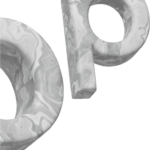

Set up your shop
Build my business plan

Creating financial projections and forecasting for your business plan
13 May 2024
Creating a new retail shop requires a lot of hard work and dedication, with long hours spent in-store, stocking, working financials and inventory, and of course creating financial projections for your company for the coming months and years.
As an integral part of your business plan, financial projections play a major role in helping you make informed decisions when it comes to everything from procuring your initial stock to future sales promotions or customer loyalty programmes.
Understanding the Basics of Financial Projections
A financial projection is simply an educated hypothesis of what the future holds for your business as relates to cash flow, revenue, and expenses. Predictions generally become easier over time as you acquire more historic data on your retail shop’s performance.
In order to prepare your financial projections, you’ll need some key information: income statement, balance sheets, and cash flow statement, so make sure you have these on hand. If you don’t have this kind of historic data yet, for example as an independent retailer looking to open your first retail shop, you’ll have to search outside your walls for the information you need to create a realistic and conservative financial projection.
Gathering and Analysing Historical Data
Your past information is a key source of future insights. But many insights can also be gleaned by looking at the historic results of the market as a whole as well as by direct and indirect competitors in your field.
Most competitors are going to be privately owned businesses, and as such the financial statements of such companies won’t be readily available, but checking on things such as promotion periods, or periods with a marked increase in advertising and correlating this to retail market trends as a whole will enable you to see how the competition faces challenges such as peaks and valleys in sales periods, when they’re investing, and the overall increase of the retail market, or your specific segment of it, over fixed periods.
By monitoring historic market conditions and the response of various retail locations, you’ll be able to project forward and create a range of scenarios for what you can expect, even as a new retail startup.
Sales Forecasting
Sales forecasting is a major part of your financial projections. These will enable you to develop medium to long-term budgets for things such as reinvestment in growth opportunities or hiring.
In order to accurately estimate future sales, you’ll want to consider numerous factors, including:
- past sales: have sales been higher or lower than average, by price, product category, etc? If you have historic information and financial statements from your own retail store to build on, it’s going to be more accurate, however, as a startup retail owner, you can follow the trajectory of the market at large as well as local competition.
- market trends: any specific market disruptions, availability of raw materials, supply chain problems, new technology…
- changes in products or customer base: are you moving new products, has your client base or the client base in your area seen a shift in demographics? Of course, if you’re opening your first store, you will have to carry out market research to get an idea of the composition of your local market rather than concerning yourself with changes in your specific clientele.
Direct and indirect competition: any new locations open or close nearby, specific promotions that could affect your sales, etc.
Expense Projections
This is the yang to the yin of sales forecasting. You need to be detailed and explicit in your expense projections, including operating expenses, marketing costs as well as your business overhead, including fixed costs for rent, insurance, salaries, loan payments, one-time or recurring software licence costs, such as for an accounting program, and service contracts.
As an independent retailer first opening your startup company, your early expenses will include fitting out your location or setting up your online store and the initial procurement of stock. These can require heavy initial investment before you see any return, so make sure you have a clear idea of how much you’re able to spend before finalising any decisions.
Don’t forget about the not-so-hidden cost of inflation either. While technology has historically become cheaper with improvements, final products have seen a marked increase over the last few years. It may be worth fixing a price and making your procurements ahead of time. With Ankorstore, you can purchase all your stock and have up to a 90-day interest-free payment plan that enables you to fix the prices now, and only start paying back when your shop is open and you’re making your first sales.
Cash Flow Forecasting
It is critically important to manage your cash flow properly. Falling behind on loan repayments or payments to suppliers is a quick road to insolvency. Therefore, you need to ensure that you are creating a realistic and complete forecast of your cash flow.
Include any income sources, including sales totals and things such as tax rebates, grants, or the money coming in based on new investors. Once you’ve listed all inflows, you’ll need to compile your outflows as we’ve previously mentioned. Whatever surplus or deficiencies are left in the accounting balance will inform you of your estimated balance at the start of the next period.
So an important part of cash flow forecasting is calculating your company’s break-even point.
Sensitivity Analysis
Sensitivity analysis is a process in which you analyse how various independent variables impact a dependent variable. So, for example, how an increase in customer traffic impacts total unit sales.
In a general sense of the overall financial health of your retail shop, you can analyse how an increase in current expenses, such as by hiring new employees or taking out a loan, will impact your cash flow. Similarly, you can see how running a promotion or marketing may impact your overall financial outcome.
It’s important to run a number of different analyses on independent variables to be prepared whatever situation comes to bear.
Risk Assessment and Contingency Planning
Even if you have plenty of historic sales information, you’re never completely clear of risk. That’s why as part of your projections, consider running a risk assessment and plan for any contingencies.
Market downturns can cause a sharp drop in total sales, especially for certain types of goods. There’s also a possibility of foreign upheaval or strikes that disrupt supply chains. In any circumstance, it’s important to have a plan for how to manage unforeseeable scenarios, whether that means simply adjusting stocking schedules and quantities, searching for new investors, changing promotions and marketing, or focussing more or exclusively on online or physical retail.
The more you plan upstream of any event, the more prepared you’ll be to react to a situation. As a new startup retailer, there are a lot of things to account for, but the more time you spend researching the market, sociodemographics, competition, and running primary market research, the less you’re likely to overlook.
Using Financial Projections to Guide Decision-Making
Your financial projections are the roadmap for a successful retail venture. By using the information you’ve meticulously gathered and analysed, you’ll be able to make decisions faster and with more confidence.
By studying the various inflows and outflows of cash, both real and projected, you can set yourself goals for progression, whether those goals include hiring your first employee or opening another location across town. As a new retailer, those goals can seem a long way off, as already attaining sustainable profitability is a major milestone. But running a successful independent retail store isn’t a “set it and forget it” process. Creating in-depth and realistic financial projections is a core skill that you’ll need to maintain and fine-tune all throughout your venture. So your goals will change with time, but the process stays the same!
Being well prepared means allocating the right resources at the right time, and such strategic decision making requires the kind of information you can only acquire through meticulous study and forecasting.
Regularly Updating and Adjusting Projections
As stated, projections or forecasts are inexact, although they do get better with time and historical data. That’s why it’s important to use every bit of hard-earned insight in order to regularly update past and future projections.
As you see a sustained increase in customer traffic or a sharp turn in the market due to unforeseen circumstances, you should absolutely make sure that you take this information into account by revisiting your projections. Correct for the actual results and carry that forward into the future.
While every day as a retail store owner comes with its own challenges and surprises, your job when working on your business plan is to take into account all the realities of your situation and come up with a realistic financial projection that you can use to set a solid foundation for your retail venture.
If you need help in developing your full business plan or have questions about how to create your financial forecasts when you don’t have much historic data, reach out to the experts in the Ankorstart programme who have helped thousands of independent retailers, from ideation through to the everyday management of their businesses.
FAQs
What information do I need to construct my financial projections?
Any historic information is a great help to ensure that your financial projections are as accurate as possible. You should also make sure that you are ready with your Cash Flow Statement, Balance Sheets and Profit and Loss Accounts. It’s important to have a good view of all cash inflows and outflows in order to be able to calculate your break-even point as well as the net positive or negative balance you are expecting to carry over month to month.
It’s harder when you’re first opening a retail store as you don’t have any past sales information of your own, so you’ll need to meticulously research market trends and local competition to see what you can expect and plan for a wide range of possible scenarios.
What is a sensitivity analysis?
A sensitivity analysis is an exercise wherein you analyse the effect an independent variable has on a dependent variable. That makes it sound a lot more complicated than it actually is. Let’s say that through a statistical study of your foot traffic, you note that on average, for every ten people who enter your store, six complete a purchase. By carrying out a sensitivity analysis, you can isolate the variable, customers, and what effect they have on your sales. In that way, for every 10% increase in customers, you can expect on average a 6% increase in the number of sales. What about when you carry out promotions? How do sales promotions affect overall unit sales or your sales margin?
By thinking about all the independent variables, you can attain a clearer image of the effect on your overall numbers.
How do I mitigate risks when it comes to my forecasting?
Risk is an inevitability. The world is made of the unforeseeable. That’s why it can be dangerous to be reinvesting when you’re working off razor-thin margins. There are a lot of ways to mitigate risk, however. Build yourself a cushion wherein a small decrease in sales won’t have catastrophic implications for your store. Likewise, being limited to one supplier for procuring all of your merchandise carries its own inherent risks. If that supplier is involved in a strike or is unable to acquire the materials they need, it will have ramifications for your business.
Keep an eye on the market and any disruptions and plan for as much as you possibly can. And consider working with a wholesale marketplace like Ankorstore. With up to 90-day interest-free payment plans and over 30,000 European brands available on our marketplace, you’re sure to find products to suit your customers and mitigate the risk of working with just one brand.
What duration should my financial projections cover?
This is going to depend on your goals, whether you are looking to make short-term decisions or look farther into the future. A short-term forecast will cover anything from a quarterly forecast up to one or two years, while more long-term forecasting looks at periods of three to five years. Whatever your goals or duration, it’s important to regularly look back on your forecasts to update for new market conditions. They are a great source of insight, whether you are under or overperforming because they’ll provide you with an opportunity to see where your estimations are off and try to understand how to correct your future projections.
Related posts "Build my business plan"

If you’ve ever wondered why you need a business plan or what it’s used for, read on. From market research to budgeting, there is so much day-to-day managing for small businesses that it’s critical to maintain clear objectives and a concise repository for all that information.

The executive summary or operational summary is essential for attracting funders. With the advice of Ankorstart’s experts, strengthen your business plan.

Before starting an e-commerce business, it is important to be well prepared. Here is a step-by-step guide to writing an effective business plan tailored to the specificities of retail e-commerce.

Everything you need to know about writing a successful business plan for a retail store.


